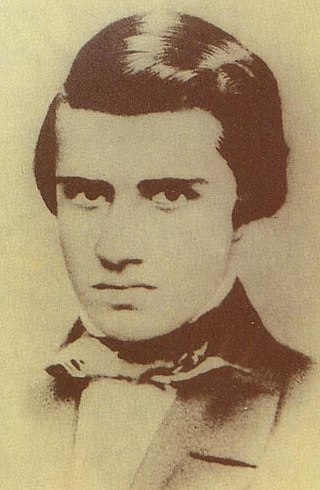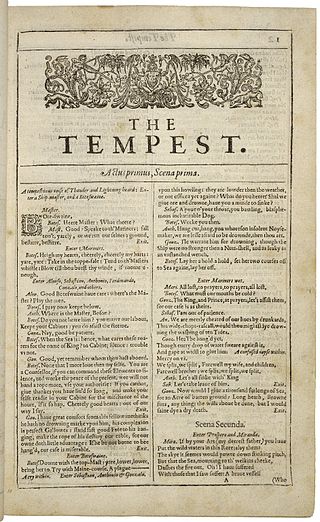Related Research Articles

Fernando António Nogueira de Seabra Pessoa was a Portuguese poet, writer, literary critic, translator, and publisher. He has been described as one of the most significant literary figures of the 20th century and one of the greatest poets in the Portuguese language. He also wrote in and translated from English and French.
This article contains information about the literary events and publications of 1853.

Brazilian literature is the literature written in the Portuguese language by Brazilians or in Brazil, including works written prior to the country's independence in 1822. Throughout its early years, literature from Brazil followed the literary trends of Portugal, gradually shifting to a different and authentic writing style in the course of the 19th and 20th centuries, in the search for truly Brazilian themes and use of Brazilian forms.

Natália de Oliveira Correia, GOSE, GOL was a Portuguese intellectual, poet and social activist, as well as the author of the official lyrics of the "Hino dos Açores", the regional anthem of the Autonomous Region of the Azores. Her work spanned various genres of Portuguese media and she collaborated with many Portuguese and international figures. A member of the Portuguese National Assembly (1980–1991), she regularly intervened politically on behalf of the arts and culture, in the defense of human rights and women's rights.

Ferdinand the Holy Prince, sometimes called the "Saint Prince" or the "Constant Prince", was an infante of the Kingdom of Portugal. He was the youngest of the "Illustrious Generation" of 15th-century Portuguese princes of the House of Aviz, and served as lay administrator of the Knightly Order of Aviz.
Casimiro José Marques de Abreu was a Brazilian poet, novelist and playwright, adept of the "Ultra-Romanticism" movement. He is famous for the poem "Meus oito anos".

Manuel Antônio Álvares de Azevedo, affectionately called "Maneco" by his close friends, relatives and admirers, was a Brazilian Romantic poet, short story writer, playwright and essayist, considered to be one of the major exponents of Ultra-Romanticism and Gothic literature in Brazil. His works tend to play heavily with opposite notions, such as love and death, platonism and sarcasm, sentimentalism and pessimism, among others, and have a strong influence of Musset, Chateaubriand, Lamartine, Goethe and – above all – Byron.

Joaquim Manuel de Macedo was a Brazilian novelist, medical doctor, teacher, poet, playwright and journalist, famous for the romance A Moreninha. He is considered the first Brazilian novelist.

Bernardo Joaquim da Silva Guimarães was a Brazilian poet and novelist. He is the author of the famous romances A Escrava Isaura and O Seminarista. He also introduced to Brazilian poetry the verso bestialógico, also referred to as pantagruélico — poems whose verses are very nonsensical, although very metrical. Under the verso bestialógico, he wrote polemical erotic verses, such as "O Elixir do Pajé" and "A Origem do Mênstruo". A non-erotic poem written in verso bestialógico is "Eu Vi dos Polos o Gigante Alado".

Luiz Alberto de Vianna Moniz Bandeira was a Brazilian writer, professor, political scientist, historian and poet.
Ultra-Romanticism was a Portuguese and Brazilian literary movement that took place during the second half of the 19th. Aesthetically similar to the German- and British-originated Dark Romanticism, it was typified by a tendency to exaggerate the norms and ideals of Romanticism, namely the value of subjectivity, individualism, amorous idealism, nature and the medieval world. The Ultra-Romantics generated literary works of highly contendable quality, some of them being considered as "romance of knife and earthenware bowl", given the succession of bloody crimes that they invariably described, which realists fiercely denounced.
Nationality words link to articles with information on the nation's poetry or literature.
"The Sea and the Mirror: A Commentary on Shakespeare's The Tempest" is a long poem by W. H. Auden, written 1942–44, and first published in 1944. Auden regarded the work as "my Ars Poetica, in the same way I believe The Tempest to have been Shakespeare's."

The Tempest is a play by William Shakespeare, probably written in 1610–1611, and thought to be one of the last plays that he wrote alone. After the first scene, which takes place on a ship at sea during a tempest, the rest of the story is set on a remote island, where Prospero, a wizard, lives with his daughter Miranda, and his two servants: Caliban, a savage monster figure, and Ariel, an airy spirit. The play contains music and songs that evoke the spirit of enchantment on the island. It explores many themes, including magic, betrayal, revenge, and family. In Act IV, a wedding masque serves as a play-within-a-play, and contributes spectacle, allegory, and elevated language.

Aureliano José Lessa (1828–1861) was a Brazilian poet, adept of the "Ultra-Romanticism" movement. Born in Minas Gerais in 1828, he moved to São Paulo in 1847 to study Law, but received his bacharel degree at the Faculdade de Direito de Olinda, in Pernambuco, in 1851. He worked as attorney general in the city of Ouro Preto, and also as a lawyer in the cities of Diamantina and Serro.

Teófilo Odorico Dias de Mesquita was a Brazilian poet, journalist and lawyer, nephew of the famous Romantic author Gonçalves Dias.
Maria Firmina dos Reis was a Brazilian author. She is considered Brazil's first black female novelist. In 1859, she published her first book Úrsula, which is considered the first Brazilian abolitionist novel. The book tells the story of a love triangle, in which the system of slavery is put into question.

Nuno Judice was a Portuguese essayist, poet, writer, novelist and academic.

Lêdo Ivo was a Brazilian poet, novelist, essayist and journalist. He was member of the Brazilian Academy of Letters, elected in 1986.

The Literature of Cape Verde is among the most important in West Africa. It is the second richest in West Africa after Mali and modern-day Mauritania. It is also the richest in the Lusophone portion of Africa. Most works are written in Portuguese, but there are also works in Capeveredean Creole, French, and notably English.
References
- ↑ Young, Richard; Cisneros, Odile (18 December 2010). Historical Dictionary of Latin American Literature and Theater . Scarecrow Press. p. 68. ISBN 978-0-8108-7498-5.
- ↑ Limites: anais (in Portuguese). EdUSP. 1995. p. 288. ISBN 978-85-314-0290-6.